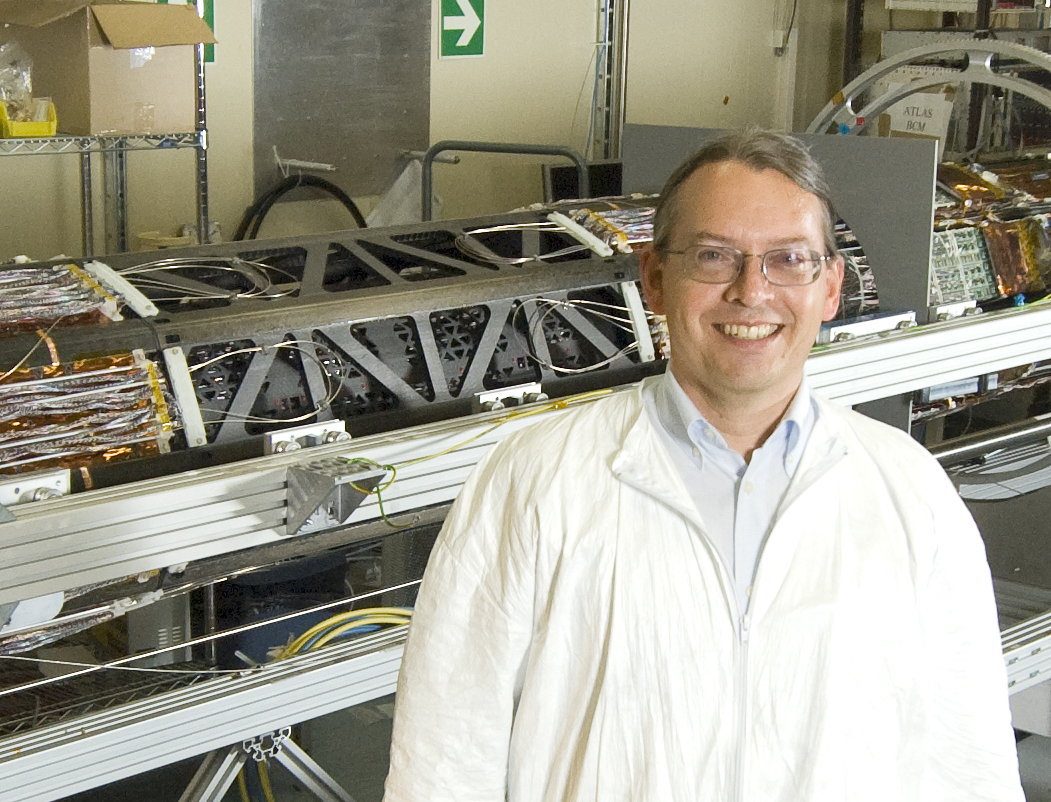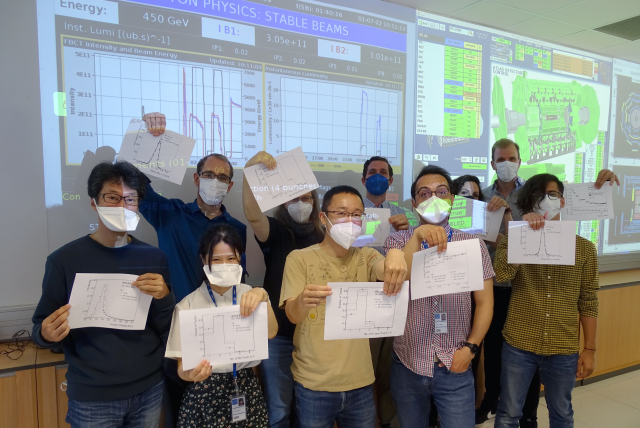Review before Run 2
1 June 2015 | By
ATLAS is ready for Run 2 of the Large Hadron Collider (LHC) where proton beams will be collided together at a higher centre of mass collision energy of 13 TeV, and reach higher luminosities than ever before.
The luminosity is a measure of the number of interactions per unit area per unit time, and increased luminosity means scientists will see rarer processes more often. In Run 2 proton bunches will be collided inside ATLAS and the other LHC experiments twice as fast as before, with a spacing between the bunches of just 25 ns, and the number of interactions per proton bunch crossing will also increase, from an average of 22 to around 50.
For ATLAS to effectively handle the increased luminosity, a huge effort of consolidation, repair and maintenance activities were done in preparation for Run 2 during the first Long Shutdown (LS1) of the LHC. Here is a condensed overview of some of the substantial progress made in ATLAS' central and sub detector systems, from hardware to software, online and offline.
The inner detector, which tracks the paths of charged particles had a brand new detector, the IBL, inserted and fully integrated into the readout and is "working like a charm" said Heinz Pernegger. This fourth layer, nearer still to the interaction point, will greatly increase the efficiency of reconstructing tracks, and the vertices where particles decay.

During the LS1 the other inner detector subdetectors had their cooling and infrastructure prepared for another three years of running at higher luminosity. The electronics are much faster, including the optical transmitters for the Semi-Conductor Tracker (SCT) which have been improved and are more robust against humidity, and the whole data acquisition system has been commissioned and is expected to operate more efficiently to improve data quality. The TRT gas system was modified significantly to minimise loss with a remote regulation system, and has new readout driver firmware for operation at higher collision rates.
The calorimeters measure the energy deposited by various particles, such as photons, electrons, mesons and jets from quarks and gluons. A number of power supplies on the detector were re-installed, electronics were consolidated, and a number of data and power transmission issues improved, providing a higher reliability of the detector and greater spatial granularity. These improvements will result in smaller systematics uncertainties, including for the jet energy scale and resolution.
The Minimum Bias Trigger Scintillators (MBTS) system is brand new, a vital system for low energy or low interaction rate runs, such as first collisions, calibration scans and heavy ion runs.
In the muon system, a number of chambers were repaired or replaced using specially designed lifting devices. New Extra Endcap chambers were commissioned, increasing the acceptance of the detector, significantly improving triggering and measurements of muon momentum. New alignment sensors were commissioned and used for calibration.
In the forward detectors region, LUCID (Luminosity Cerenkov Integrating Detector) has been replaced by a completely new detector which will provide high quality luminosity measurements. ALFA, a forward detector designed to measure independently from ATLAS the total cross-section at a 1-2% precision, has been upgraded with a new heat protection system.
The trigger and data acquisition system upgrade has been a major programme, which must deal with double the number of interactions per bunch crossing and the increased luminosity of Run 2. The biggest upgrade has been the merger of the second and third level trigger (Level 2 and the Event filter) into one High Level Trigger which will write out 2.5 times the previous amount of data utilizing improved trigger algorithms. The trigger rate itself will increase by a factor of 5. Numerous new hardware was installed including the L1 topological trigger, and a new Level 1 muon trigger on the outer later of the Tile Calorimeter which will significantly reduce fake muons and thus increase the muon purity.
ATLAS' magnet system comprises a solenoid and a combination of barrel and two end-cap toroids. The services of the system were consolidated including the cooling infrastructure, such as the installation of an extra powerful booster compressor. New helium dewar was installed to allow continual operation of the solenoid when the toroids are recovering from being warmed.
Finally a new Uninterruptable Power Supply protection system has been put in place against electrical glitches, allowing a full 10 minutes for ATLAS to shut the detector down in the event of a power cut to avoid any damaging effects. Last October during a small power cut in the region around CERN, ATLAS was one of the only facilities which remained operational.



